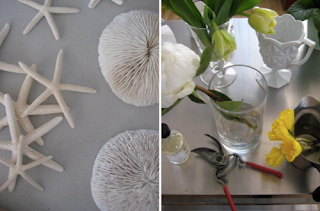




Every Spring, that old "Spring Clean' story comes riding up on it's fresh white horse and as a Stylist you need to jump in the saddle and with spray bottle in one hand and a scrubbing brush in the other, reinvent, re inspire and revisit ways of presenting cleaning as a fun and fulfilling activity that one must do. I am not sure if it comes with part of the job, but I have to agree, nothing beats a gleaming white tile and that star burst that emanates from a fresh scrub, in other words, I love a spring clean, summer, winter and fall too!
Shop Smart is a magazine that is amazingly free of ads and is published by Consumer Reports, www.consumerreports.org. Consumer Reports, owned by the non-profit consumer advocacy group Consumers Union, receives some grants from foundations and individuals. But it’s run mostly with money from subscriptions to the magazine and its website. This is my second cover I have styled for them. As I have often stated, a cover requires many options, and for this cover we tried many different bathroom sinks, mirrors and wall options. Working with a clean palette of white, orange, blue and yellow, Shop Smart Magazine like to keep their covers simple, direct and to the point. Their reader wants to be informed about the best and most responsible consumer choices with a quick and instant read on the cover and so the end result best reflects this. Their tag line is "No Hype + No Ads + Just Great Buys"
From the behind the scenes shots, you can see various prop ideas that lay out on my tables, We explored everything from different flower arrangements and other alternative botanical references such as shells, plants and even coral. There had to be some reference to actual cleaning products in the shot, so we had a mountain of different scrubbers, cloths and cleaning products on hand, It was a fanatical cleaning frenzy!
Monica Buck, www.monicabuck.com is a photographer I have had the pleasure of working with for quite some time, Her and I have shot 2 covers and a feature for Shop Smart.




















